Fortinet and Palo Alto Networks are two of the best network security providers, offering excellent next-generation firewalls (NGFWs) with strong, independently verified security. Fortinet excels in usability and administration, while Palo Alto has an edge in advanced features and firewall capabilities.
We’ve compared the two NGFWs to help you select the better one for your business.
Consider using Fortinet or Palo Alto in the following scenarios:
- Fortinet: Best for simple operations, small-scale deployments, and a user-friendly dashboard ($914.31+ per month)
- Palo Alto: Better for scalability, advanced capabilities, (starting around $1,000)
Fortinet vs Palo Alto at a glance
Here are some key similarities and differences between Fortinet and Palo Alto’s NGFWs:
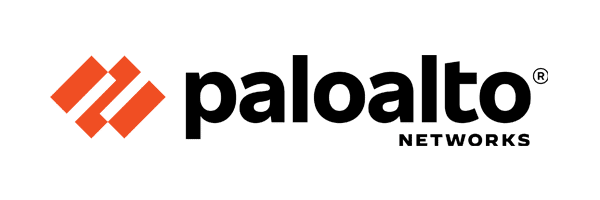 | ||
|---|---|---|
| Starting Price Range for SMB/Branch Firewalls | $300-600 | $1,000-1,800 |
| Free Trial | 30 days for virtual version of firewall | 30 days for AWS cloud trial; 15 days for AWS virtual firewall trial |
| Intrusion Prevention | Yes | Yes |
| User-Based Policies | Yes | Yes |
| Sandboxing | Yes | Through WildFire |
| Documentation | Plenty | Plenty |
| Training Videos | Some tips-and-tricks videos | Unclear |
| Visit Fortinet | Visit Palo Alto |
Fortinet scored higher in our comparison of the two products, mainly due to its administrative capabilities, ease of use, and high pricing. But don’t count Palo Alto out — it’s widely considered the best overall security vendor in the market, and its firewalls are excellent.
Skip down if you want to learn more about how we compared the two, or continue reading for more info on pricing and features.

Fortinet overview
Better for pricing, usability and administration, and customer support
Overall Rating: 4.7/5
- Pricing: 5/5
- Core features: 5/5
- Additional Features: 4.2/5
- Ease of us: 4.7/5
- Administration: 4.3/5
- Customer support: 4/5
Fortinet’s FortiGate is a series of network security appliances that protect networks from threats. It has integrated SSL inspection, intrusion prevention, web filtering, and other features that offer cost-effective security.
Fortinet’s strength lies in its easy deployments within a small-scale environment and user-friendly security valued by small businesses. Additionally, FortiManager enables unified management and consistent security in hybrid environments.
Key capabilities
- FortiOS: Federated upgrades for users help keep your security infrastructure consistently updated.
- SD-WAN features: Integrated SD-WAN helps optimize network performance and improves connectivity for distributed operations.
- VPN tunneling: Scalable IPsec VPN tunneling helps protect remote and distributed workforces by securing communication channels.
- Security processing units (SPUs): These units accelerate network security processing, improving overall system speed and efficiency.

Palo Alto overview
Better for advanced features and functionality
Overall Rating: 4.3/5
- Pricing: 4.1/5
- Core features: 5/5
- Advanced features: 4/5
- Ease of use: 4.3//5
- Administration: 4.1//5
- Customer support: 4.1/5
Palo Alto Networks offers an ML-powered next-generation firewall for various environments, from small offices to data centers. These NGFWs prioritize extensive functionality despite an overall higher market cost.
Palo Alto’s unified network security architecture secures virtual, on-premises, and containerized environments, making it ideal for large companies with strong IT and security teams.
Key capabilities
- Comprehensive visibility and control: Extended administration through Panorama helps admins manage multiple network components.
- User-based policies: Palo Alto enforces policies by using existing user repositories and limiting application access based on user roles and permissions.
- Machine learning for threat detection: The NGFWs apply machine learning methods to detect and prevent intrusions.
- Centralized management: Panorama gives admins a single point of contact to centrally manage NGFWs across the network.
Better for pricing: Fortinet
 | ||
|---|---|---|
| Starting Price Range for Smallest Firewalls | $300-600 | $1,000-1,800 |
| Starting Price Range for Enterprise/Most Advanced Firewalls | $40,000 | $60,000 |
| Free Trial | 30 days for virtual version of firewall | 30 days for AWS cloud trial; 15 days for AWS virtual firewall trial |
| Visit Fortinet | Visit Palo Alto |
Winner: Fortinet
Fortinet’s small-business-focused FortiGate appliances start around $500. The 40F model typically runs between $450 and $650. A mid-range campus appliance can range from $1,200 to $50,000. Expect costs from $40,000 and up for data center models like the 1000F.
Some of the most expensive can cost over $1 million from resellers. The 7121F may cost $1 million with maintenance and protection. Pricing isn’t available on Fortinet’s website, but AWS Marketplace provides a cost calculator, and some resellers offer pricing, too.

Palo Alto’s PA hardwall firewall series starts at $1,000 for the PA-410, designed for enterprise branches, and goes up to over $200,000 for the high-end PA-7000 series. Palo Alto’s PA-7500 is one of its most impressive, with significant data processing power; expect to pay a minimum of $200,000 but more with support bundles and other extras.
Palo Alto provides a comprehensive demo center to let users explore the features the firewalls offer.

Better for core features: Tie
 | ||
|---|---|---|
| Deep Packet Inspection/SSL Decryption | Yes | Yes |
| Intrusion Prevention | Yes | Yes |
| DNS Security | Yes | Yes |
| URL Blocking/Web Content Filtering | Yes | Yes |
| Alert Prioritization | Yes | Yes |
| User-Based Policies | Yes | Yes |
| Visit Fortinet | Visit Palo Alto |
Winner: Both
Fortinet checks many boxes for basic firewall features, making it a great choice for small businesses and enterprises. Key capabilities to highlight include URL blocking, DNS security, and network analytics. Its core features also include centralized management and threat prevention.
Fortinet also triages alerts through FortiGuard, its security services that integrate with all FortiGate firewalls. While not as scalable as Palo Alto, it still performs well in smaller business contexts.
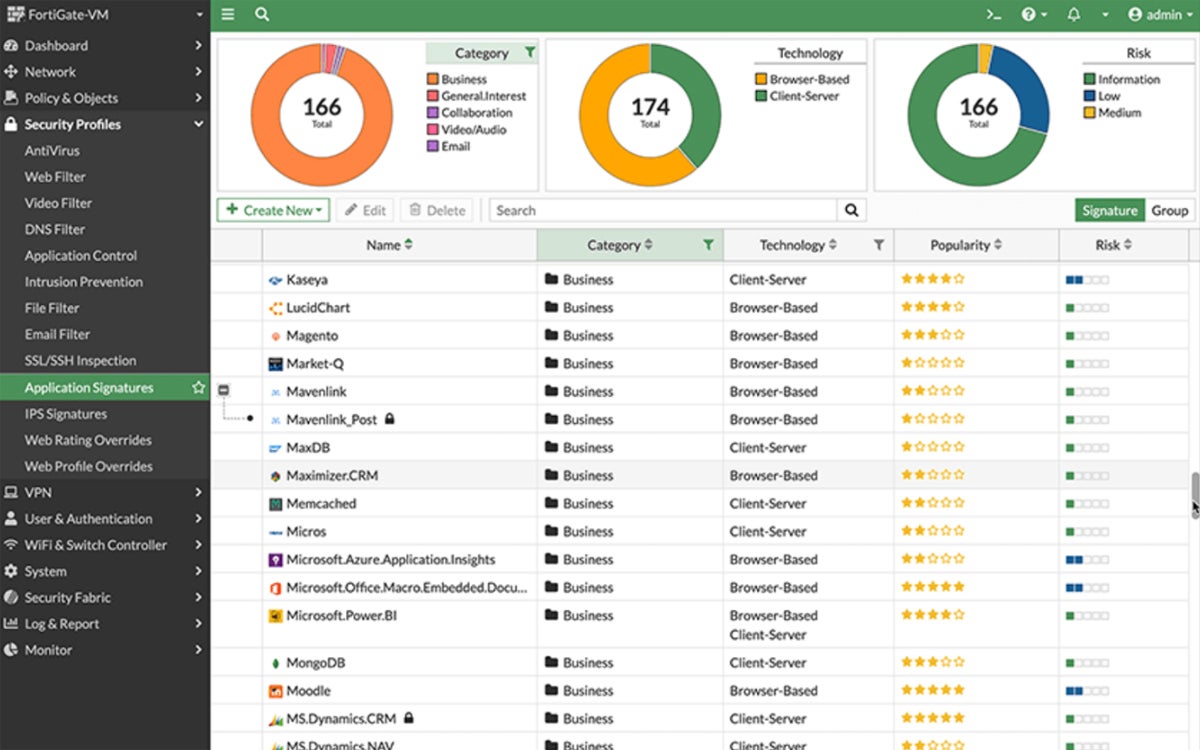
Palo Alto also offers an impressive selection of key firewall features, including DNS detections, advanced URL filtering, and intrusion prevention, which can help stop zero-day attacks. Its zero-trust security and single-pass parallel processing architecture provide scalable, user-centric policies and improve performance maintenance over time.
If you want to maximize your firewall’s features, Palo Alto’s continuous innovation, powerful machine learning, and comprehensive security capabilities make it a strong choice.
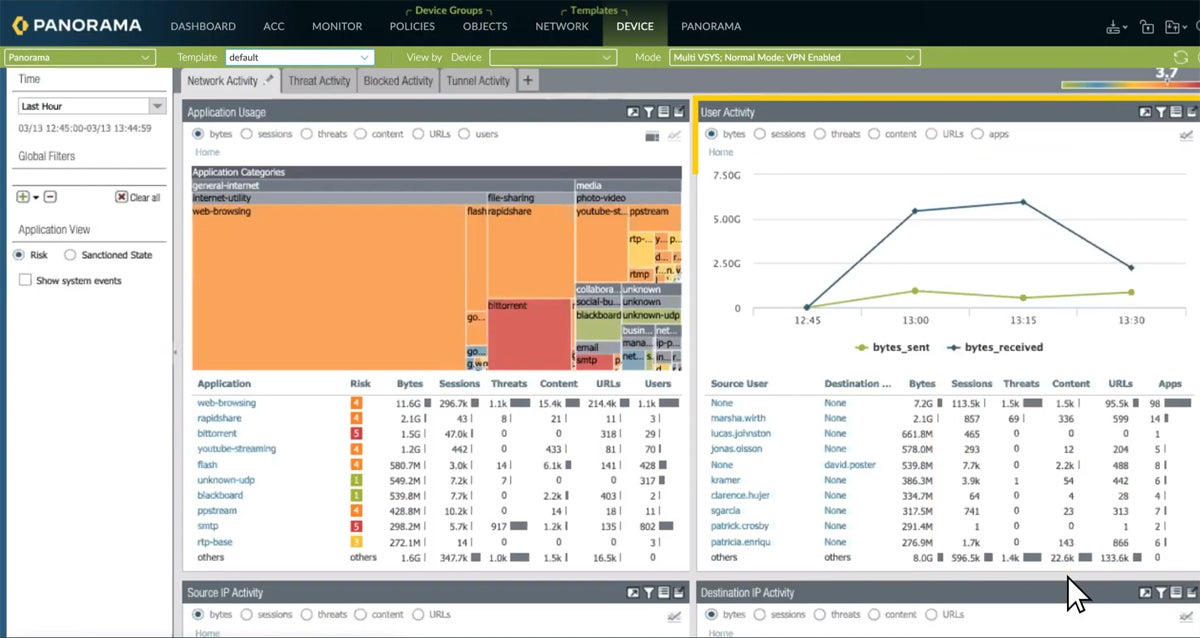
Better for advanced features: Palo Alto
 | ||
|---|---|---|
| Anti-Spyware/Anti-Spam | Anti-spyware | Anti-spam |
| Sandboxing | Yes | Through WildFire |
| Email Filtering | No | Yes |
| User Controls | Yes | User identity features |
| Domain Blocking | Yes | Yes |
| Visit Fortinet | Visit Palo Alto |
Winner: Palo Alto gets the edge here for its email filtering features.
When it comes to advanced features, Palo Alto is a top firewall pick — for good reason. It offers anti-spam, email filtering, and sandboxing through its WildFire product. Its complexity is where Palo Alto loses some customers. Still, for security teams who want to dig into the meat of firewall management, Palo Alto provides plenty of advanced options.
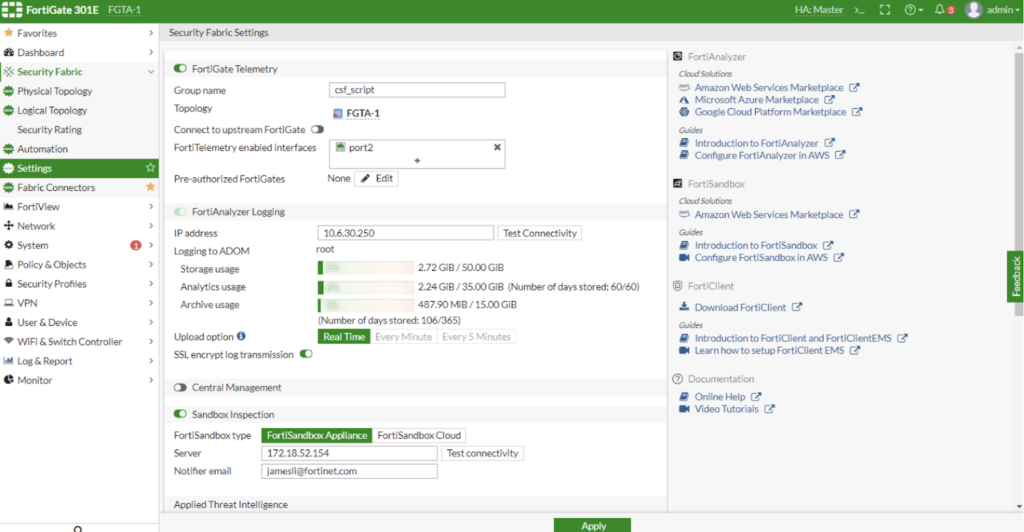
Fortinet’s advanced capabilities and extras include domain blocking, user controls, and sandboxing through FortiSandbox, where customers can analyze potential malicious samples in more detail.
Although Palo Alto won this category, Fortinet is still a great pick for teams that need more features — it’s just being compared to the industry’s best network security provider.

Better for ease of use: Fortinet
 | ||
|---|---|---|
| Single Management Console | Yes | Yes |
| Extensive Documentation | Yes | Yes |
| Training Videos | Some tips-and-tricks videos | Unclear |
| API | Yes | Yes |
| Custom Firewall Rules | Yes | Yes |
| Visit Fortinet | Visit Palo Alto |
Winner: Fortinet
Both Fortinet and Palo Alto have exceptional usability features as two of the best firewall providers, but Fortinet narrowly won my assessment because it has some training videos for users. Fortinet’s knowledge base is extensive, providing comprehensive material and training resources. Other highlights include an API and custom rules for firewall admins.
Fortinet also has high user satisfaction rates for ease of use and deployment. Gartner Peer Insights evaluates its overall deployment and integration as 4.5/5.
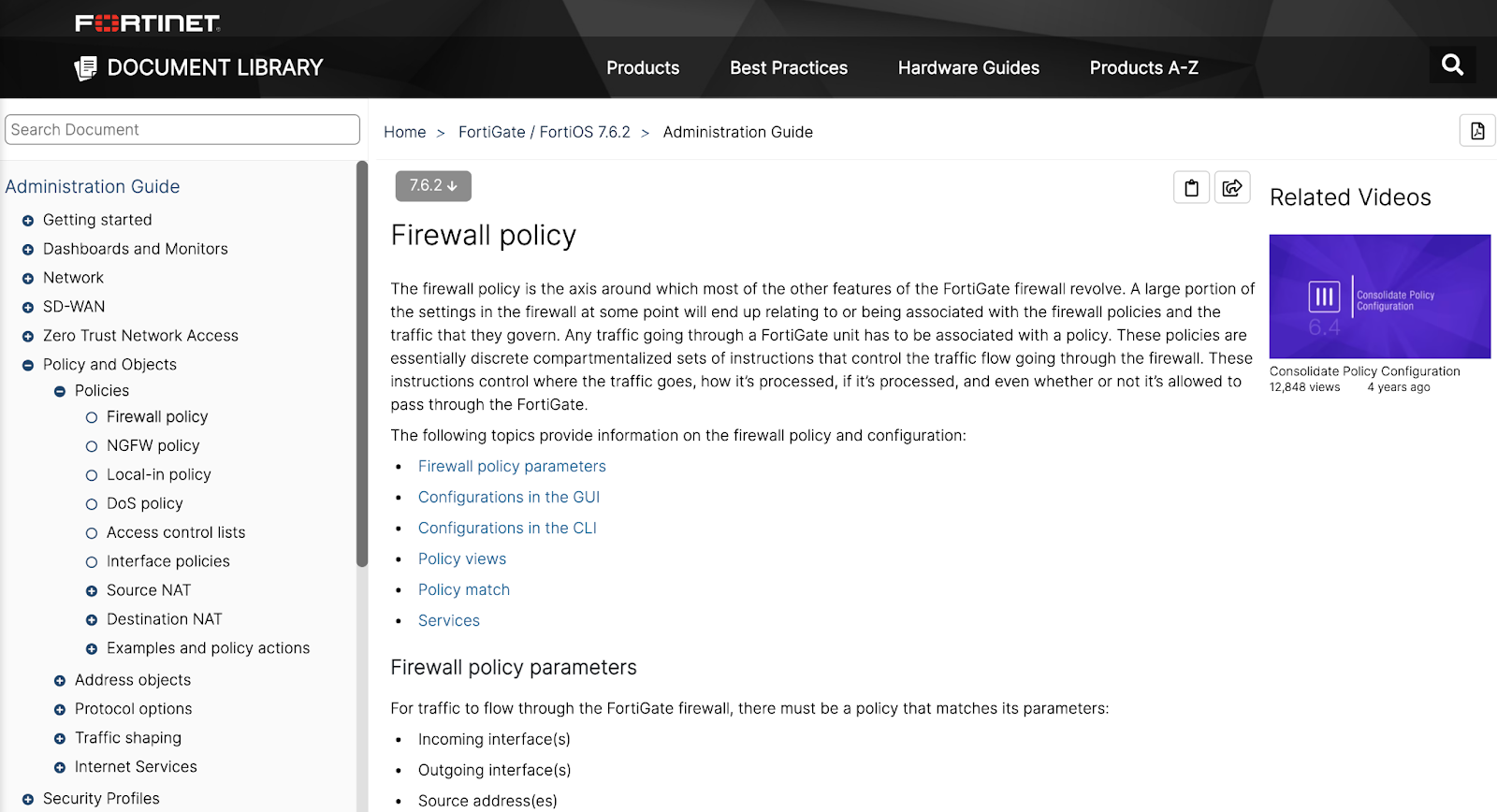
Palo Alto’s usability is also impressive, with a 4.6/5 Gartner Peer Insights deployment rating. It deserves a special callout for its documentation alone, with plenty of well-designed help pages.
While it seems to lack training videos for more visual users, it does offer some educational training sessions online. Like Fortinet, Palo Alto has an API for users who want extended firewall management options like scripting.

Better for administration: Fortinet
 | ||
|---|---|---|
| Cloud and Virtual Firewalls Available | Both | Both |
| Managed Firewall Option | Yes | Unclear |
| Log Retention | With disk logging | 366 days |
| Central Dashboards | Yes | Yes |
| Visit Fortinet | Visit Palo Alto |
Winner: Fortinet
Fortinet has customizable FortiOS dashboards with a Network Operations Center (NOC) and responsive layouts. Responsive dashboards automatically modify columns to fit the screen size, whereas NOC dashboards allow for vertical and horizontal widget scaling.
Fortinet can be deployed in the cloud and on virtual machines. It’s also available as a managed service, which is why Fortinet won this category over Palo Alto.
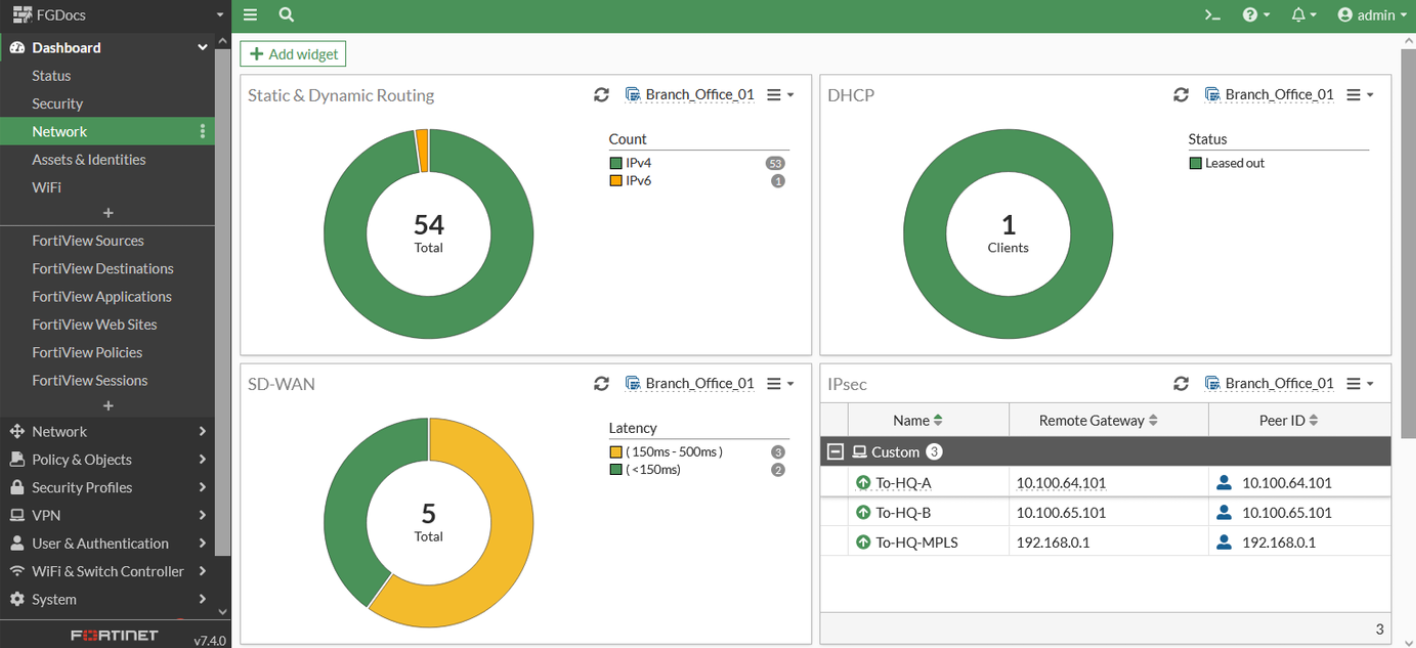
Palo Alto’s dashboard displays firewall or Panorama information, including software version, interface status, resource utilization, and log entries within the previous hour. Users can display or hide widgets based on their preferences for targeted monitoring.
Palo Alto’s firewalls can be cloud-based or run as a virtual firewall. NGFW management can be a little more complex to use and configure than Fortinet, but it’s a worthwhile challenge for more experienced security teams.

Better for customer support: Fortinet
 | ||
|---|---|---|
| Phone | Yes | Yes |
| Yes | Unclear | |
| Live Chat | Yes | Unclear |
| Customer Community/User Forum | Yes | Yes |
| Option to Have Technical Account Manager | Yes | Yes |
| Visit Fortinet | Visit Palo Alto |
Winner: Fortinet
Fortinet’s multiple support channels make it a strong option for teams looking for various support options — phone, email, and live chat are all available. On the customer community side, Fortinet has a forum for users to post questions as needed. On the review side, Fortinet earns 4.5 out of 5 stars on Gartner Peer Insights for service and support.

Palo Alto’s customer support team is available 24/7 through its Premium support service, with assistance available via phone. Palo Alto also provides free and comprehensive technical documentation, demos, and training tools. Its overall Gartner Peer Insights service and support score is 4.4 out of 5 stars.
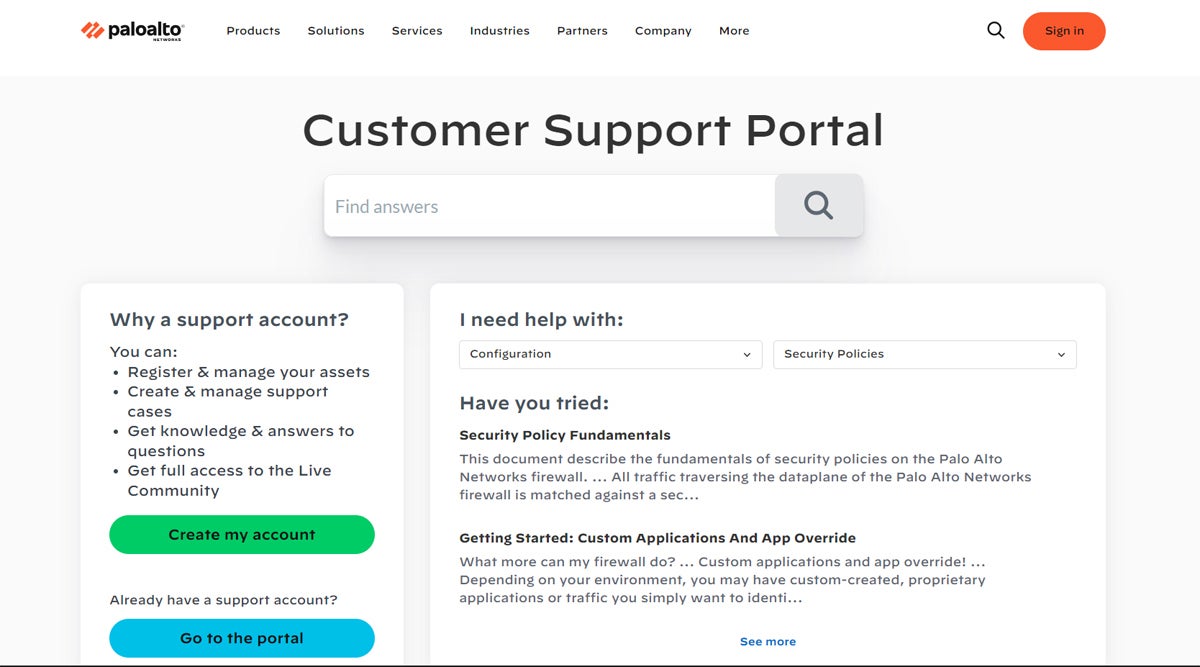
Fortinet vs Palo Alto: Cloud compatibility and security performance
Fortinet is ideal for enterprises that want secure and efficient solutions tailored to the security requirements of distributed operations and branch offices within their network architecture. It still offers great performance and comprehensive features. Fortinet’s strength is its ability to cater to mid-sized and small organizations, offering enterprise-grade solutions suited to their specific needs.
Conversely, Palo Alto Networks has a distinct advantage in cloud use cases and meeting the complex needs of large companies. Its firewall offerings range from small offices and campuses to mid-sized and large enterprises. Its high performance in extreme environments demonstrates Palo Alto’s scalability with complicated network settings.
In 2024, Fortinet and Palo Alto, along with seven other vendors, underwent independent firewall testing from CyberRatings. Both were recommended as strong options.
- Fortinet FortiGate-900G had a 98.21% protection rate.
- Palo Alto’s PA-450 had a 96.36% protection rate.
For independent industry firewall testing, Fortinet came out ahead in security effectiveness, but just barely.
Who shouldn’t use Fortinet or Palo Alto?
Fortinet and Palo Alto Networks firewalls may not be suitable for everyone, especially those who value cost-effectiveness, specialized scalability needs, or unique environmental considerations. Knowing your organization’s needs and preferences allows you to make a better-informed decision about choosing the best type of firewall for your business.
Who shouldn’t use Fortinet?
Here are some instances where Fortinet may not be the best fit for you:
- Cloud-centric enterprises: Fortinet may not be the best fit for enterprises that rely heavily on cloud use cases.
- Companies with complex enterprise needs: For those with complex and advanced network requirements, Fortinet’s capabilities may be inferior to Palo Alto’s.
- Those wanting instant customer service: User reviews have shown potential delays in Fortinet’s customer service, making it less suitable for teams needing fast assistance.
Who shouldn’t use Palo Alto?
Palo Alto might not be a great choice for users such as the following:
- Businesses with limited budgets: Palo Alto Networks may not be the ideal option for those with tight budgets, as it’s a premium solution with higher costs.
- Companies with limited in-house expertise: Organizations lacking firewall management skills may struggle with Palo Alto’s complexity.
- Organizations with small-scale deployments: Businesses with low firewall requirements may find extensive features unnecessary.
3 Best Alternatives to Fortinet & Palo Alto
Fortinet and Palo Alto Networks are excellent firewalls, but they may not suit every budget or all needs. Other strong competitors exist for those seeking top performance and for whom price is a secondary consideration. These include Check Point, Cisco, and Sophos.

Check Point
Check Point, a Gartner leader, offers strong NGFW solutions and is best for users seeking excellent sandboxing capabilities. Price starts at $2,100 for smaller packages.
Distinguished by SandBlast Zero-Day Protection, Check Point suits businesses of all sizes seeking top-notch threat prevention, application control, and URL filtering. The user-friendly SmartConsole dashboard enhances its appeal.
Read our comparison of Check Point and Palo Alto if you’re interested in learning more.
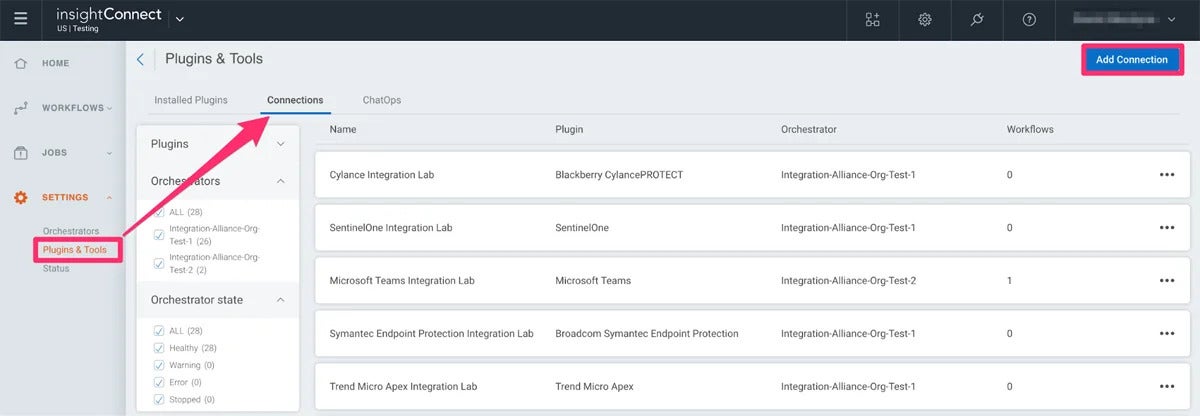

Cisco
Cisco, a networking industry leader, continues to be at the forefront of firewall technologies with advancements such as the 2015 SD-WAN acquisition by Embrane. Cisco Secure Firewall emphasizes real-time protection in dynamic circumstances. It supports scalable business policies and provides robust intrusion prevention.
Cisco is perfect for companies that require complete security and uniform network regulations.


Sophos XGS
Sophos, a U.K.-based cybersecurity company, offers the Sophos XGS Series with Firewall Xstream architecture. Designed for complex network segments, it provides reliable data security for SaaS, SD-WAN, and cloud traffic.
The XGS Series is ideal for small security teams. Its easy-to-use UI, two-factor authentication, remote VPN, and powerful web traffic rules ensure full network security.
Read our comparison of Sophos XGS and FortiGate to learn more about their differences.

How we compared Fortinet and Palo Alto
To compare Fortinet and Palo Alto NGFWs, we broke down key NGFW factors into six key criteria: core features, pricing, advanced features, ease of use, administration, and customer support. Each criterion had specific subcriteria, and we assigned category ratings from one to five after assessing the corresponding subcriteria for each service on our list.
Pricing – 15%
We reviewed the cost and transparency of NGFW solutions by determining the availability and sufficiency of free trials or free plans and the accessibility and transparency of price information.
Core features – 25%
We examined major NGFW capabilities, such as deep packet inspection, integrated intrusion prevention (IPS), and integrations with threat intelligence sources. Other important features included web content filtering and SSL inspection.
Additional features – 10%
In addition to major features, we evaluated options like sandboxing, anti-spyware, and email filtering. Other firewall features include domain blocking and the option to set up Palo Alto or Fortinet as a reverse proxy.
Ease of use – 20%
In this category, we considered features that make the firewalls more straightforward to use and configure, like ample product documentation and training videos. Overall customer reviews also contributed to this category.
Administration – 15%
Administrative capabilities included cloud deployment and managed and virtual firewall options. Additionally, this category considered how long the vendors retained logs and whether dashboards were available to customers.
Customer support – 15%
We evaluated Fortinet and Palo Alto based on support channels like phone, email, and live chat. Demos and the availability of a technical account manager for businesses wanting that extra support also factored into their scores.
Bottom Line: Fortinet vs Palo Alto
Both Fortinet and Palo Alto deliver high network firewall security performance. Fortinet has the advantage in pricing, usability, and customer support options, while Palo Alto has the edge in advanced firewall features.
Although both have higher costs than some competitors, good network security pays for itself in terms of cost savings from preventing breaches. Explore Fortinet and Palo Alto’s free demos to gauge what’s better for your team’s needs.
If you’re just looking for a firewall with good security, either may do, but you may also see our full list of the best next-generation firewall (NGFW) vendors for additional buying options.




